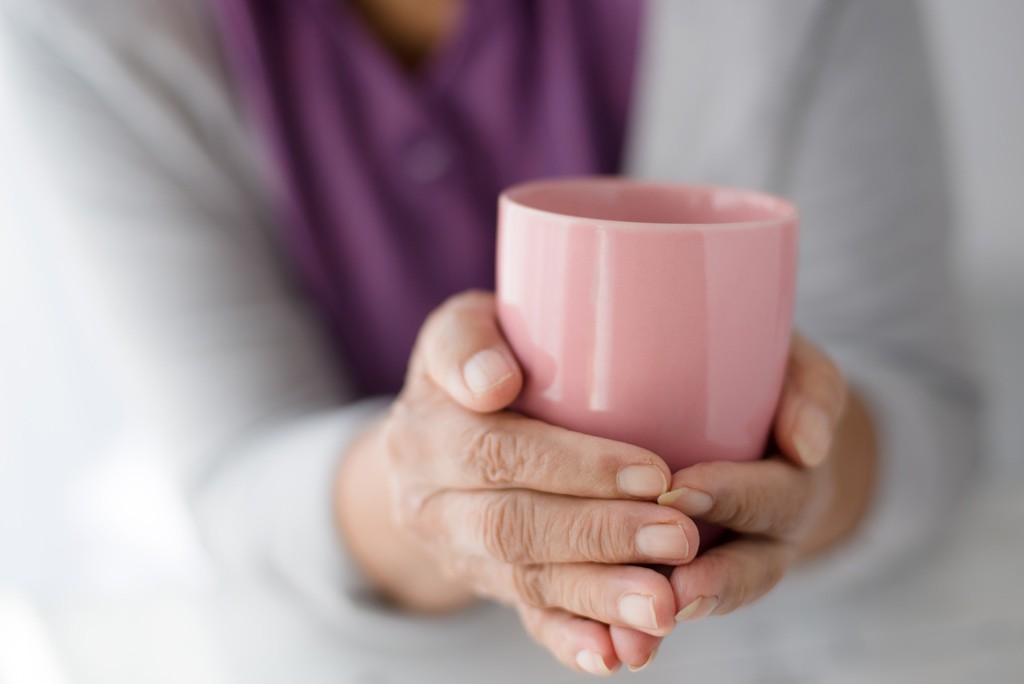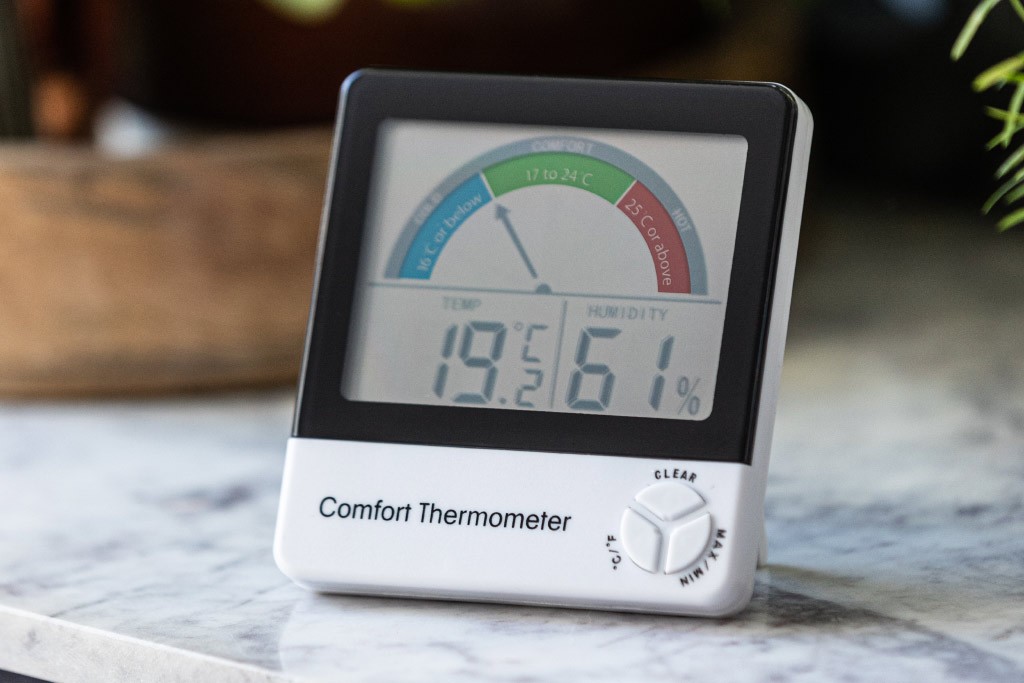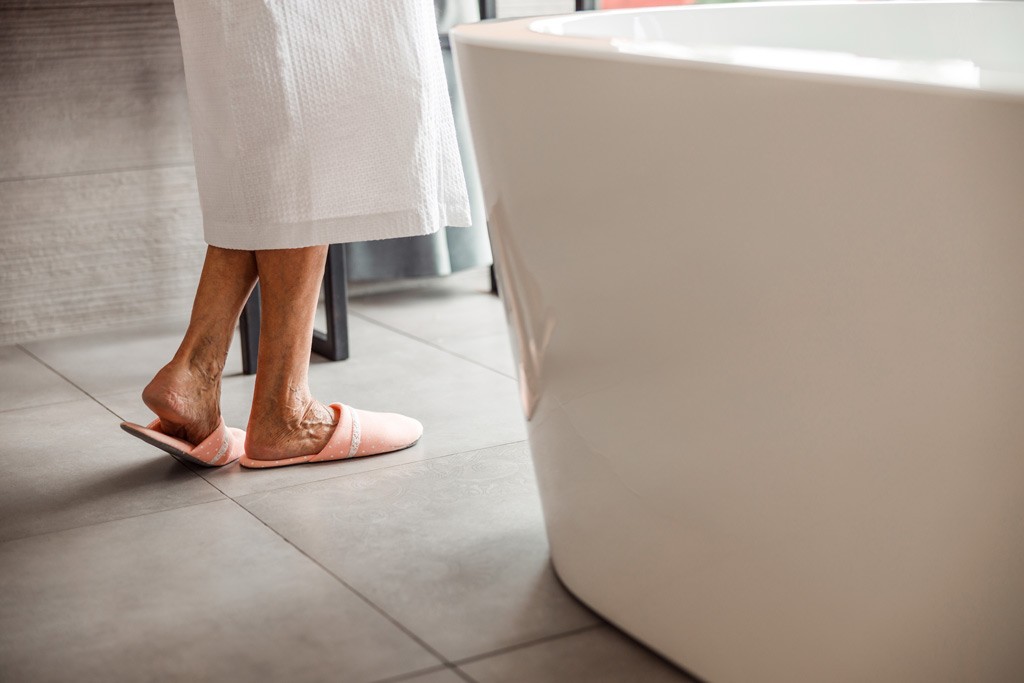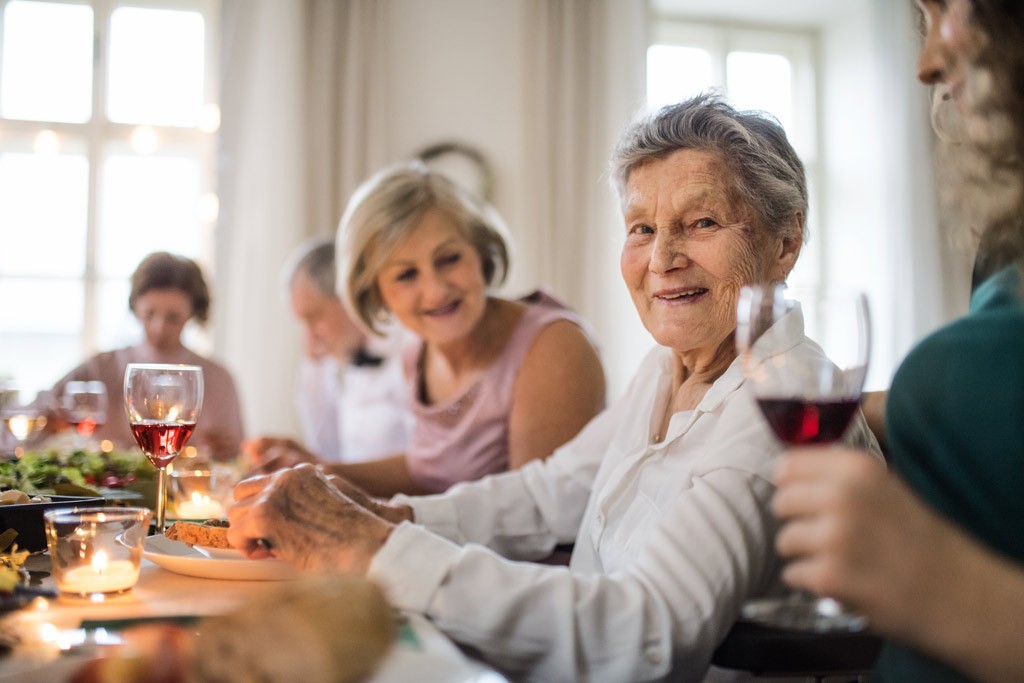7 Temperatures for Health & Safety in Care Homes

Older people require special attention when it comes to the temperatures of their bodies, food and homes. Their bodies do not retain heat or regulate temperature as easily as younger people, so hypothermia is a greater risk. Meanwhile, checking water systems for legionella risks and preparing food safely is also important to avoid illness.
Whether monitoring health and safety in care homes, in a hospital or in an older adult’s home, temperatures are crucial. Read on to learn which temperatures to monitor and which thermometers are best for carrying out risk assessments for elderly care.
1. Elderly body temperature
What is the normal body temperature for an elderly person?
The average body temperature for adults is around 37 °C. However, it’s normal for people over the age of 65 to have a body temperature closer to 36 °C. This is because as we age, our bodies don’t regulate temperature and retain heat as well.
What happens if an elderly person’s body temperature is too low or too high?
A high temperature or fever is when body temperature is over 38 °C. This is not usually a cause for concern unless the temperature is very high or will not come down.
Hypothermia is a concern if a person’s body temperature is reading below 35 °C and they have any of these symptoms:
- shivering
- pale, cold and dry skin – their skin and lips may be blue
- slurred speech
- slow breathing
- tiredness or confusion
How to measure an older person’s body temperature?
We would recommend our Non-Touch Forehead Thermometer for elderly people. Infrared forehead thermometers are not invasive, and they allow temperatures to be taken without contact. This makes them more comfortable to use whilst preventing the spread of infectious diseases.
Our infrared forehead thermometer is simple to use and reads the temperature in one second. It also has a memory function which stores the past 25 readings, perfect for recording temperatures as part of health and safety checks.
Shop the No-Touch Forehead Thermometer.
2. Room temperature for older adults
Monitoring room temperature and humidity is important for all people to ensure comfort and optimum health. But for babies and vulnerable or elderly people, safe room conditions are essential.
What is the recommended room temperature for elderly in the UK?
20 °C is a comfortable and ideal room temperature for most people. As older adults struggle to stay as warm, it’s recommended that living room temperatures are kept at a minimum of 21 °C and bedrooms at 18 °C.
What happens if room temperatures are too low?
For vulnerable and elderly people, cold room temperatures increase their chance of serious illness or death. They are at higher risk of heart attacks or strokes, breathing problems, flu, depression and falls.
Which room thermometer is best for care homes and older people?
The ETI Comfort Thermometer is the easiest way to make sure room temperature and humidity stay in a safe and comfortable range.
The colour-coded dial makes it clear when temperatures are low, comfortable or high. It also simultaneously shows the temperature and humidity, as both are important factors for health.

3. Bath temperatures for elderly people
Vulnerable and older people may not be able to adjust or react as quickly to hot temperatures, increasing the risk of scalding or other serious complications from overheating.
What is the ideal bath temperature for elderly people?
To prevent the risk of scalding, hot bath or shower water should not exceed 44 °C. A comfortable bath temperature is somewhere around body temperature, 37 °C.
Which is the best bath thermometer?
Any probe thermometer is appropriate for taking the temperature of liquids, including bath water. Ideally a waterproof one. If you use a food thermometer in your kitchen, you could even use this to check the temperature of the bath (as long as you are careful to sanitise it thoroughly before using it in your kitchen again).
If you’re looking to purchase a thermometer for using in the bath, we would recommend a Thermapen thermometer. These have a much higher accuracy and a faster read time than bath thermometers. They’re also designed, made and calibrated by hand in the UK for maximum reliability.
4. Legionella risks in care homes
Like all businesses, care home managers must carry out legionnaires’ risk assessments to control the risk of legionella bacteria in water supply systems. This is particularly important when looking after health and safety in care homes as residents are likely to have weakened immune systems, so are more vulnerable to infections.
What equipment is needed for legionella risk assessments for elderly care?
The ETI Legionnaires’ Water Kit contains everything you need to carry out regular cold water temperature checks, including a thermometer with different probes for running water and pipes, a countdown timer and a carry case.

5. Food safety in care homes
Because older people usually have lower immune systems they are more at risk of contracting foodborne illnesses. So food safety is more important than ever when managing health and safety in care homes.
There are a few temperatures that should be monitored to prevent the risk of illness:
Storage temperatures — for businesses, refrigerated food must legally be stored under 8 °C, though it’s recommended to keep it at around 5 °C.
Cooking temperatures — certain foods such as poultry, pork and minced meat should all be cooked until they have reached a core temperature of 70 °C for two minutes or equivalent (i.e. to 75 °C for 30 seconds).
Cooling & reheating — hot food should be cooled and refrigerated within two hours. If reheating, it must reach a core temperature of 70 °C for two minutes.
What thermometers are best for catering in care homes?
Whether you’re serving food in a nursing home, hospital or at home, a fridge thermometer and food probe are essential tools for safety.
For fridge temperatures, we would recommend our Digital Fridge/Freezer Alarm Thermometer. It can be attached to the outside of your fridge, with the external probe secured inside, to simultaneously monitor your room and fridge temperatures. This makes it easy to check your food storage temperatures without even having to open the fridge. Plus, the audible alarm will sound if the temperatures fall outside of your preset ranges, preventing costly food spoilage.
The best food thermometer for cooking and reheating food is the Thermapen One Thermometer. With an unrivalled speed and accuracy, a five-year guarantee and a free certificate of calibration, you can be confident that your food temperatures are accurate and your dishes are safe to serve.
Shop the Digital Fridge/Freezer Alarm Thermometer.
Shop the Thermapen One Thermometer.

6. Pipes, radiators and hot surfaces
Hot pipes and radiators pose the risk of burning and scalding, particularly for older people who may have reduced mobility or slower reactions to hot temperatures. Therefore, it is important that hot surfaces in care homes are monitored as part of risk assessments for elderly care and kept below 43 °C to reduce the risk of injury.
What is the best thermometer for monitoring pipe and radiator surfaces?
You may like to pair a thermometer that takes interchangeable probes with a surface probe to monitor your radiator temperatures. The Therma 1 Thermometer is a good option for this as you could switch the probes to use it for both legionella risk assessments, bath water and hot surfaces.
If you’d like a designated thermometer for the job, the Thermapen Surface Thermometer is a great choice as it is compact and lightweight; simply fold the probe inside the thermometer and slot it into a pocket to transport around a building and carry out multiple checks.
Shop the Thermapen Surface Thermometer.
7. Medicine storage temperatures
Some vaccines and medications need to be kept at cold or specific temperatures. Storing medicines at the correct temperature is absolutely essential, so an accurate thermometer is necessary for this.
Which thermometer is best for medicine storage?
The ThermaGuard Pharm is the best thermometer for medicines and vaccines because the probe sits inside a liquid that is designed to simulate medicines. This means that the readings accurately reflect the temperature of the medicine rather than the air temperature in the refrigerator. In addition, the CalCheck function means users can verify the accuracy of the thermometer at any time, giving complete confidence in its readings.
You might also like:
Top 5 Room Thermometers for Saving Energy
5 Best Hygrometers for Measuring Humidity
5 Best Catering Thermometers for Your HACCP Plan